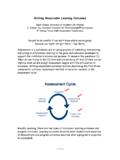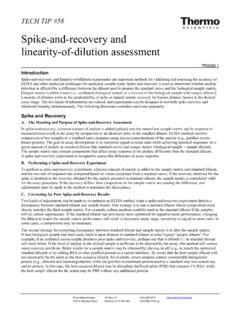Transcription of Lesson 17: Dot Plots, Histograms, and Box Plots
1 Lesson 17: Dot Plots , Histograms, and Box Plots D. Legault, Minnesota Literacy Council, 2014 1 Mathematical Reasoning Lesson 17: Dot Plots , Histograms, and Box Plots Lesson Summary: For the Warm Up, students will solve a problem about donations. In Activity 1, they will learn and practice vocabulary about Plots and histograms. In Activity 2, they will interpret box Plots . In Activity 3, they will do problems in the workbook. Activity 4 is an application activity about inches of snow. The homework is the review word problems for data measurement.
2 There is also an exit ticket. Estimated time for the Lesson is 2 hours. Materials Needed for Lesson 17: Video (length 10:00) on box Plots . The video is required for teachers and optional for students: Handout , Notes on Box Plots (attached) Worksheet with answers (attached), making box and whisker Plots Worksheet Answer to Application problem (attached) Mathematical Reasoning Test Preparation for the 2014 GED Test Student Book (pages 38-39 and 40-47) and Workbook (pages 54-55). Exit ticket (attached) Teacher Notes: o You can add more examples if you feel students need them before they work.
3 Any ideas that concretely relate to their lives make good examples. o When you do a worksheet, look for an easier problem to do together first as it may not necessarily be the first problem . Also, students may only have time to do part of the worksheets in class and the rest can be assigned as homework. Objectives: Students will be able to: Solve the review word problem Understand and interpret dot Plots , box Plots , and histograms Create a box plot ACES Skills Addressed: N, CT, LS, ALS CCRS Mathematical Practices Addressed: Building Solution Pathways, Mathematical Fluency, Model with Math Levels of Knowing Math Addressed: Intuitive, Abstract, Pictorial, and Application Notes: You can add more examples if you feel students need them before they work.
4 Any ideas that concretely relates to their lives make good examples. For more practice as a class, feel free to choose some of the easier problems from the worksheets to do together. The easier problems are not necessarily at the beginning of each worksheet. Also, you may decide to have students complete only part of the worksheets in class and assign the rest as homework or extra practice. The GED Math test is 115 minutes long and includes approximately 46 questions. The questions have a focus on quantitative problem solving (45%) and algebraic problem solving (55%).
5 Students must be able to understand math concepts and apply them to new situations, use logical reasoning to explain their answers, evaluate and further the reasoning of others, represent real world Weekly Focus: Plots Weekly Skill: interpret and create Lesson 17: Dot Plots , Histograms, and Box Plots D. Legault, Minnesota Literacy Council, 2014 2 Mathematical Reasoning problems algebraically and visually, and manipulate and solve algebraic expressions. This computer-based test includes questions that may be multiple-choice, fill-in-the-blank, choose from a drop-down menu, or drag-and-drop the response from one place to another.
6 The purpose of the GED test is to provide students with the skills necessary to either further their education or be ready for the demands of today s careers. Lesson 17 Warm-up: Solve the donation question Time: 10 Minutes Write on the board: Lynelle donates money to charitable organizations every year. This year she gave of her donations to the Red Cross, 15% to a homeless shelter, and 3/5 to the United way. Her total donations are $240. Basic Questions: How much did she donate to the Red Cross? (1/4 of $240 = $60) To the homeless shelter?
7 ( x $240 = 36) To the United Way? (3/5 = 6/10 =60% = x $240 = $144) Extension Questions: Make a graph to represent Lynelle s donations. o Let students start and see if they think of making a circle graph. It should look about like this: Lesson 17: Dot Plots , Histograms, and Box Plots D. Legault, Minnesota Literacy Council, 2014 3 Mathematical Reasoning Lesson 17 Activity 1: Vocabulary Time: 15-20 Minutes 1. Write the vocabulary words on the board: dot Plots , box Plots , quartile, and histogram.
8 2. You will teach the vocabulary with class examples and the student book pages 38-39. 3. For dot plot, write a number line on the board. Ask five students how many children they have. For each response, put a dot above the number line at the correct spot. Explain that dot Plots consist of a number line and dots are used to visually see the outcomes. a. Ask students what the median of the dot plot is. (It s the middle number) b. Ask what the minimum number is. (It will be the lowest and could be 0) c. Ask what the maximum is.
9 (It s the highest number) d. Now find the median of the bottom half. That is the first quartile. e. Now find the median of the top half. That is the third quartile. f. Draw a box plot to represent these measurements. 4. A histogram is a bar graph in which each bar represents a range of frequency. Unlike dot Plots , they are often used to represent large amounts of data. See the example on page 39. 5. Note to teacher: Using data from the class is preferable to explain dot Plots and box Plots . However, if you prefer, you can use the example on page 38 to explain these types of graphs.
10 6. Do the exercises on pages 38-39 in the student book together. Lesson 17 Activity 2: Interpret Box and Whisker Plot Time: 15-20 Minutes 1. Give students Handout Go through the example together. 2. Practice interpreting a box and whisker plot by doing Worksheet Circulate to help and if someone finishes early, he/she can do answers on the board as long as other students are almost done. Lesson 1 Activity 3: word problems Time: 25 Minutes Have students work independently in the workbook pages 54-55. Circulate to help.













